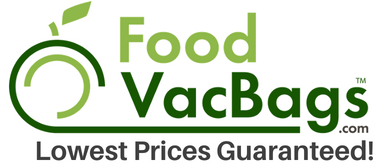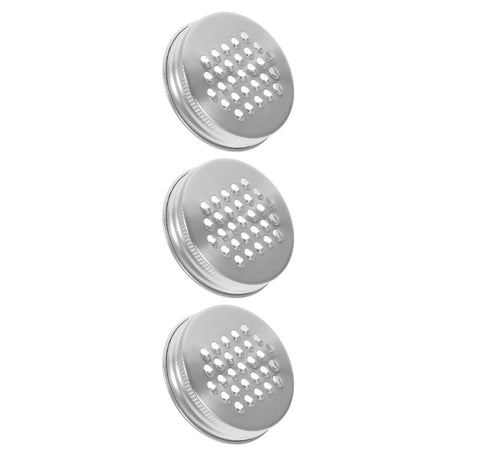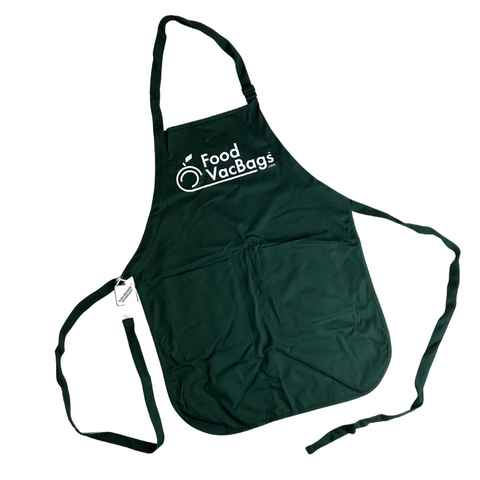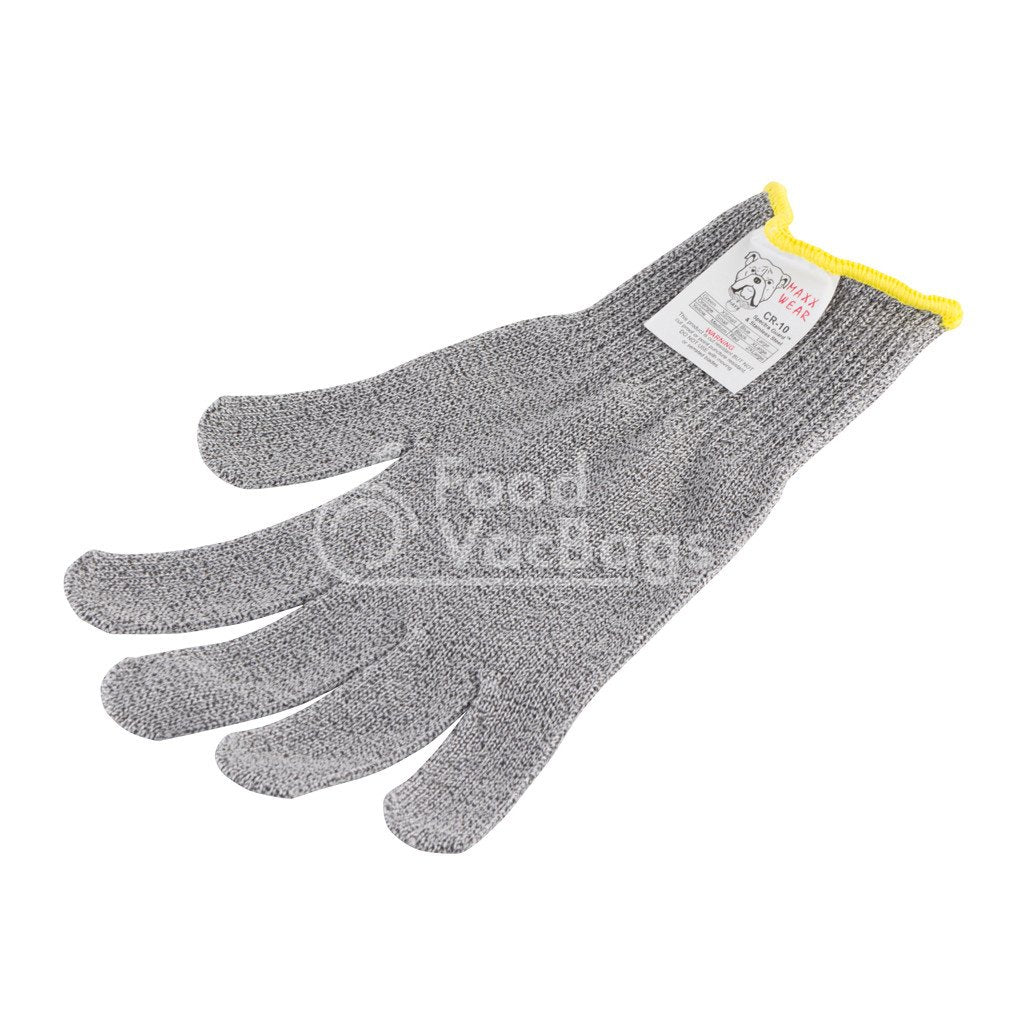

Maxx Wear® Cut Resistant Glove - MEDIUM
$ 12.99
CR-10-579_1MSignup to get the FoodVacNews newsletter that includes special deals only for our readers!
- Exclusive newsletter DEALS
- Special discounts
- Amazing vacuum seal Recipes
- Tips for vacuum sealing
- Vacuum sealing product help
- Unique vacuum sealing ideas!
- FoodVacBags company information
- and MORE!
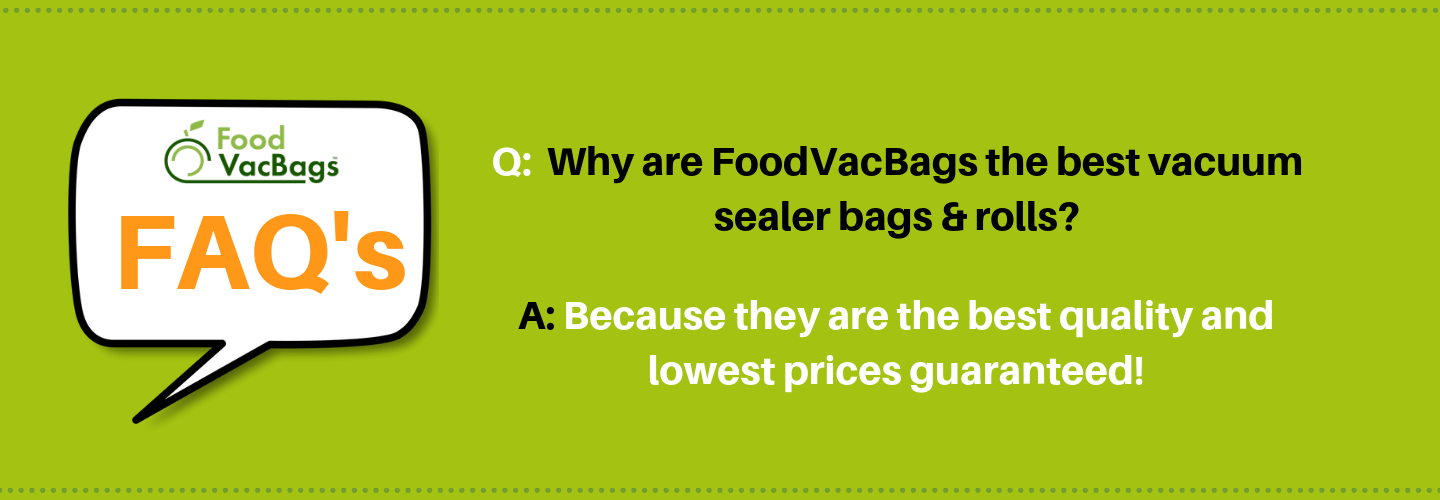
 What is vacuum sealing?
What is vacuum sealing?
Vacuum sealing (also known as vacuum packing) is a method of packaging that removes air from the package prior to sealing. This method involves (manually or automatically) placing items in a plastic film package, removing air from inside, and sealing the package. The intent of vacuum packing is usually to remove oxygen from the container to extend the shelf life of foods and, with flexible package forms, to reduce the volume of the contents and package.
 Will FoodVacBags™ Rolls & Bags work with Foodsaver™ (and other) vacuum sealer machines?
Will FoodVacBags™ Rolls & Bags work with Foodsaver™ (and other) vacuum sealer machines?
Yes! FoodVacBags Rolls and Bags are made to work with any type of vacuum sealer machine. This includes: FoodSaver™, Vesta Precision®, Seal-A-Meal®, Regal®, VacMaster®, Weston®, Cabela's® and more.
 Does my order ship for free and how fast will it ship?
Does my order ship for free and how fast will it ship?
Yes! We offer free shipping on all products throughout the contiguous United States (except for Emergency Essentials products). There is a surcharge for orders shipping to AK, HI and other US territories. We ship same day on all orders received before 2 pm Central Time. Any order placed after 2 pm on a Friday will be shipped on Monday. Find more details here.
 Are FoodVacBags™ Rolls & Bags BPA Free and US Food and Drug Administration (FDA) approved?
Are FoodVacBags™ Rolls & Bags BPA Free and US Food and Drug Administration (FDA) approved?
 Yes! FoodVacBags Rolls and Bags are BPA Free and are made of FDA approved materials and are phthalate free. They are safe for food.
Yes! FoodVacBags Rolls and Bags are BPA Free and are made of FDA approved materials and are phthalate free. They are safe for food.
 How thick are FoodVacBags™ Rolls & Bags?
How thick are FoodVacBags™ Rolls & Bags?
Our bags our 3.5-4 mil thick. They have one side with a pattern, which facilitates the vacuum process. That will measure thicker, due to the pattern. The smooth side will measure at the above stated mil.
 Can I use FoodVacBags™ Rolls & Bags in the freezer?
Can I use FoodVacBags™ Rolls & Bags in the freezer?
Yes! You can use all our FoodVacBags Rolls and Bags for freezing food. Vacuum sealing is ideal for freezing because it removes the oxygen that causes freezer burn. Food stays fresh and tasty much longer.
 Is it safe to microwave or boil FoodVacBags™ Rolls & Bags for cooking?
Is it safe to microwave or boil FoodVacBags™ Rolls & Bags for cooking?
Yes! A small puncture in the bag is needed to allow steam to escape when using in the microwave. For sous vide cooking or when simmering pre-packed food in water, closely monitor that the pot has plenty of water and the vacuum bag is not in direct contact with the bottom of the pot. We also suggest double sealing the bags when using them for sous vide cooking. Follow proper food safety practices.
 Can I pour boiling water into FoodVacBags vacuum seal bags to reconstitute dried foods?
Can I pour boiling water into FoodVacBags vacuum seal bags to reconstitute dried foods?
Yes! You can pour boiling water into FoodVacBags vacuum seal bags. CAUTION - BOILING WATER CAN CAUSE SEVERE BURNS. The bags cannot stand alone and become even more flexible when boiling water is added. We suggest putting the bag into a container and folding the opening of the bag over the lip of the container to give it some stability and give you something to hold onto while stirring or eating from the bag.
 Where are FoodVacBags™ Rolls & Bags manufactured?
Where are FoodVacBags™ Rolls & Bags manufactured?
FoodVacBags Rolls and Bags are manufactured in China; just down the road from where FoodSaver™ bags are made.
 Can I re-use FoodVacBags™ Rolls & Bags?
Can I re-use FoodVacBags™ Rolls & Bags?
Yes! They can be cleaned and re-used at your discretion. Just cut off existing seal, then re-vacuum package. Be sure to wipe off any grease or food residue inside the bag that may affect the seal. They can also be resealed after washing and drying the bag thoroughly.
We do not recommend re-using FoodVacBags Rolls and Bags after storing raw meats, greasy foods or fish. Also, do not re-use vacuum sealed bags after microwaving or boiling.
 How do I create and use a bag out of a roll?
How do I create and use a bag out of a roll?
- Cut the desired amount of roll material.
- Seal one side of the bag, using 'seal' button on most standard machines.
- Remove bag and insert product into open end of bag.
- Insert open end in machine and complete vacuum and seal process.
 These 50’ rolls won’t fit in the storage area of my machine. What can I do?
These 50’ rolls won’t fit in the storage area of my machine. What can I do?
Customers purchase the 50’ rolls because they are a great value per foot of material. You have two options:
- Cut and feed the material from the front of the machine only. Using bag making steps above.
- Cut off about 20’ of material from the roll and wrap it around an old roll core. Place that inside your machine. Save the remaining roll to refill when needed.
 Air was removed from the bag, but now it seems to be filling up with air. Why?
Air was removed from the bag, but now it seems to be filling up with air. Why?
It is possible that the seal was not secure on the bag. A wrinkle along the seal can cause leakage and allow air to enter. Sometimes moisture or food material (such as blood, grease, powders, crumbs, etc.) prevent the bag from sealing properly. In the above cases, cutting the seal, cleaning the area and resealing should fix the problem.
If you are vacuum packaging sharp food items, the bag may have been punctured. Always cover sharp food items with a soft cushioning material.
Finally, fermentation or the release of natural gases from inside the foods may have occurred. When this happens, food may have begun to spoil and should be discarded.
 Why can't certain vegetables be vacuum packaged?
Why can't certain vegetables be vacuum packaged?
Vegetables such as broccoli, cauliflower, cabbage and Brussels sprouts give off gases when they are stored. This gas will cause the bag to expand, and the vegetables will go bad. The best way to store all vegetables is to blanch them first, then cool, dry, vacuum pack and freeze. Read here on other foods that should not be vacuum sealed.
 What’s the best way to vacuum seal soft or delicate foods like berries or baked goods?
What’s the best way to vacuum seal soft or delicate foods like berries or baked goods?
Place food on a cookie sheet and stick in the freezer for a while. When the food is solid, it will be ready to seal in your vacuum sealer bag.
 What type of foods can be vacuum sealed, and for how long?
What type of foods can be vacuum sealed, and for how long?
For a detailed list of foods and shelf life, click here for vacuum seal shelf life PDF. Read more about which foods should not be vacuum sealed here.
 Can I put boiling water into Mylar bags?
Can I put boiling water into Mylar bags?
No! Do NOT put boiling water into Mylar bags.
Try a Maxx Wear® Cut Resistant Glove. It's the perfect addition to a chef's kitchen!
